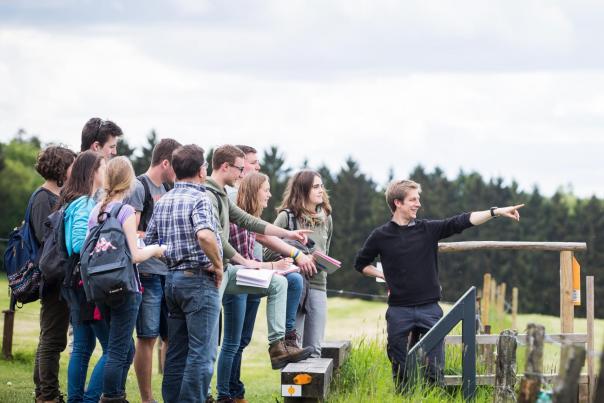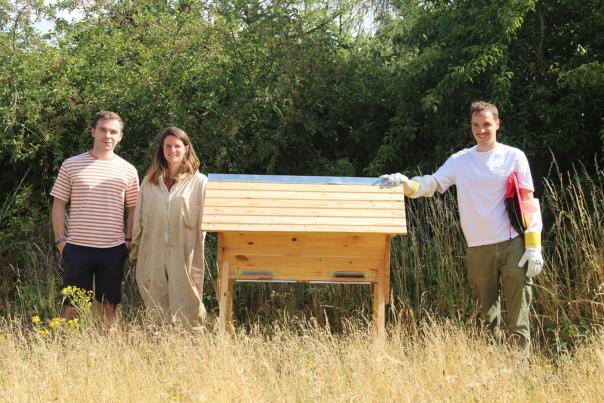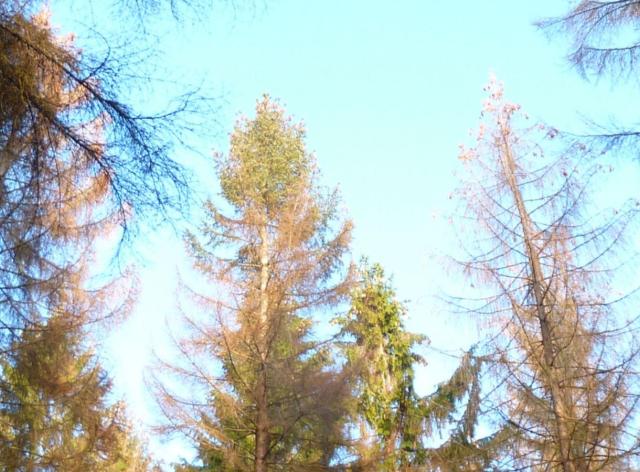Biodiversity and conviviality at Le Bon Pasteur
This project led by the Assemblée des kots à projets, in partnership with the spin-off e-biom, is part of an initiative to create a convivial area near the buildings housing the fifteen or so kots à projets. On the program: installation of picnic tables, creation of a hedge of small fruit trees, sowing of a flower meadow... A green space designed and created for and by the students, which will also be a refuge for birds and insects passing through.

May'AGE: an apiary in town
Respect for ecosystems through sustainable, local food is at the heart of this project, initiated within the VéCU (Carmiel project) and supported by the Assemblée générale des Étudiants (AGE). The aim is to transform the garden of the Carmel de Jambes student residence into a flower meadow and apiary favoring a native and endangered species of bee (Apis mellifera mellifera). In particular, Fonds Jérôme will finance the purchase of seeds, hives, beekeeping outfits and equipment, training courses and the creation of educational panels for the awareness-raising activities that will be carried out around the apiary.
Project sponsors: Assemblée Générale des Étudiants (AGE), in partnership with Camille Calicis, beekeeping trainer.

Swallow nest action
UNamur is participating in the return of swallows to the center of Namur by placing 34 double nests in the heart of its campus at numbers 61 and 39-49 rue de Bruxelles.
The decline in swallow and swift numbers over the last thirty years due mainly to the disappearance of their nesting sites, and the verification of the phenomenon at the Corbeille in Namur during the latest censuses, the AGE proposed installing swallow nests on campus.
This proposal was well received by the Vice-Rectorat au Développement Durable, especially as a similar initiative had already been initiated at the Centre de Recherche Ovine du Domaine d'Haugimont with the asbl Cap'Hirondelles in January 2019, enabling in particular three new pairs of window swallows to find refuge.
Apus on campus
The decline in Black Swifts (Apus apus) populations has been noted in Wallonia for some thirty years. On the initiative of members of the Laboratory of Evolutionary Genetics and Ecology (LEGE), and in collaboration with the non-profit organization Natagora, 30 nests are being installed on campus to encourage the return of these migratory birds. These shelters also help to safeguard other cave-dwelling species, such as the house sparrow, the black redstart and certain bats. An awareness-raising component has been set up to inform the public about this initiative, echoing the installation of 34 swallow nests on Rue de Bruxelles in April 2021. Learn more
Project initiators: Jérémy Berthe, Boris Hespeels, Martin Vastrade (URBE/LEGE), Marie-Laurence Hubin (URBE), in collaboration with the asbl Natagora (Martine Wauters).
Other actions have also been undertaken:
- Biokot: installation of insect hotels at the Arsenal
- Biokot: project to install passerine nesting boxes on campus
- CaNDLE "Good school, bat'scool" project to implement bat nests on campus
- Campus integration into Natagora's Nature Network: floristic inventories are currently being carried out at campus level with a view to an action plan for our green spaces
Domaine d'Haugimont
The Domaine d'Haugimont is an exceptional site belonging to the University of Namur. It is located in the heart of the Province of Namur in the superb Condruzian countryside. The region boasts over 200 kilometers of marked trails.
